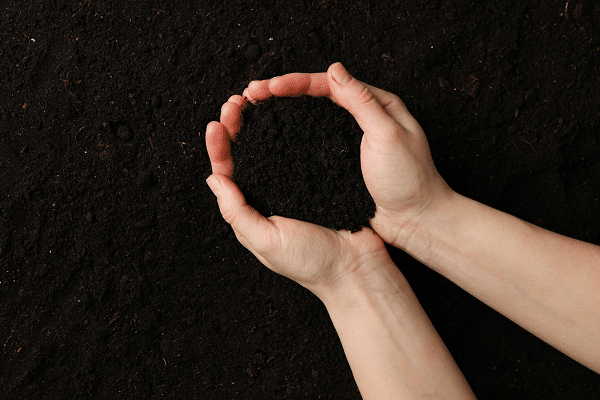Lavender, botanically known as Lavandula, is a flowering plant famous for its vibrant hues and intoxicating fragrance. A symbol of purity and tranquility, lavender is admired globally, not just for its beauty, but for its wide array of uses and benefits. From repelling bugs to improving soil quality, enhancing culinary dishes, and attracting pollinators, lavender has something to offer to every gardener. This blog post delves into these and other benefits, providing a comprehensive guide on why growing lavender in a garden can be a delightful and advantageous experience.
Contents
Aesthetic Appeal
The beauty of lavender lies not only in its lovely purple hue but also in its aromatic fragrance. These attributes make it an appealing choice for many gardeners who wish to elevate their gardens’ visual and sensory appeal. Lavender can be used to create a stunning hedge, can provide striking contrast in rock gardens, or can be a central feature in a flower bed. The endless landscaping possibilities with lavender provide opportunities for creativity and personal expression in garden design.
Moreover, lavender’s long blooming period, which typically spans from late spring to early autumn, ensures that gardens have a consistent splash of color for most of the year. The addition of lavender plants can help transform any outdoor space into a vibrant, sensory retreat. In essence, cultivating lavender in a garden is an excellent way to combine functionality with beauty, fostering a space that is both captivating to the senses and beneficial in numerous ways.
Excellent Bug Repellant
Among the top reasons to cultivate lavender is its natural insect repelling properties. Lavender emanates a strong scent that mosquitoes, moths, and other bugs find distasteful. This trait makes lavender a safe, eco-friendly alternative to commercial bug repellants. Incorporating lavender into a garden not only adds to its aesthetic appeal but also creates an outdoor space that’s less attractive to pesky insects, allowing garden-goers to enjoy their time outside without the worry of being bitten.
The efficacy of lavender as a bug repellant is supported by numerous anecdotal accounts and some scientific research. For instance, studies suggest that lavender oil could be used as an active ingredient in non-toxic mosquito repellants. Thus, by adding lavender plants to a garden, one can benefit from its insect-repelling qualities and contribute to an environment that favors the use of natural, less harmful substances.
Easy To Grow And Maintain
Lavender is renowned for being a hardy plant that can survive in a variety of environments. It is tolerant to drought, resistant to deer, and can thrive in a range of soil types, making it an ideal plant for those new to gardening. The fact that lavender requires little watering and care further adds to its appeal as a low-maintenance plant. This simplicity of care makes the lavender plant a fantastic option for anyone who wishes to experience the joys of gardening without extensive time or effort.
When it comes to growing conditions, lavender favors well-drained soil and plenty of sunlight. Providing basic care tips for lavender, such as appropriate planting depth, adequate spacing, and pruning methods, will help gardeners keep their lavender plants healthy and flourishing. Therefore, growing lavender is a beautiful and uncomplicated way to enhance a garden’s aesthetic, while also reaping a multitude of benefits that these plants have to offer.
Soil Improvement
Lavender plants can contribute to the health and quality of garden soil. Their deep root systems help prevent soil erosion, especially on slopes or in windy areas. Additionally, these roots can reach deeper soil levels, drawing up nutrients that other plants might not access, thereby naturally enhancing the fertility of the garden soil.
Moreover, lavender is a low-maintenance plant that thrives in many types of soil conditions, even those deemed poor or rocky. The plant’s adaptability means that it can help improve soil structure over time, creating a healthier environment for other plants in the garden. In this way, adding lavender to a garden doesn’t just enrich its visual appeal but also boosts its overall ecosystem health.
Culinary Uses
Lavender’s distinctive floral notes make it a valuable and interesting addition to various dishes. From enhancing sweet treats like ice cream and scones, to contributing an unexpected twist to savory dishes, lavender can truly elevate a culinary experience. It can also be used to flavor honey, syrup, and vinegar, or to create refreshing herbal teas. A garden abundant in lavender offers a readily accessible, versatile ingredient that can inspire a wealth of creative cooking endeavors.
As a culinary herb, lavender is used most commonly in its dried form. However, fresh lavender can also be a wonderful addition to salads, stews, or as a garnish to dishes. Including examples like lavender-infused lemonade or lavender sugar cookies can show just how much this little plant can do in the kitchen. Hence, adding lavender to a garden not only provides an enchanting visual display and aroma, but also a pantry staple that can truly enrich the cooking and eating experience.
Beneficial For Pollinators
Lavender plants are an attractive food source for several pollinator species, including bees and butterflies. These insects are drawn to lavender’s vibrant blossoms and the rich nectar they provide. Consequently, introducing lavender into a garden significantly increases its attractiveness to these beneficial insects, thereby aiding in their conservation and promoting biodiversity.
The importance of supporting pollinators cannot be overstated, particularly in light of the global decline in many pollinator species. Encouraging their presence in gardens not only helps these crucial species thrive but also aids in the pollination of other plants, leading to more vibrant and productive gardens. Therefore, cultivating lavender in a garden contributes to a broader environmental balance, demonstrating the interconnectedness of all elements in a garden ecosystem.
Lavender’s Medicinal Properties
Lavender has a rich history of medicinal use dating back to ancient times. Renowned for its calming properties, it is often used in aromatherapy to alleviate anxiety and promote better sleep. Having lavender in the garden can provide easy access to its soothing scent, providing a natural way to improve mental well-being. Indeed, simply spending time in a lavender-filled garden can result in feeling more relaxed and at peace.
Additionally, lavender oil, distilled from the plant’s flowers, is often used to soothe minor burns and bug bites. It is recognized for its anti-inflammatory and antiseptic properties, which can aid in speeding up the healing process and preventing infection. Thus, growing lavender in the garden offers an accessible first-aid remedy, making it a practical and beneficial addition to any home garden.
Conclusion
Cultivating lavender in a garden brings a multitude of benefits that extend beyond its appealing aesthetic and delightful fragrance. It acts as a natural bug repellant, offers numerous medicinal properties, improves soil quality, benefits pollinators, serves as a versatile culinary herb, and requires minimal maintenance. Moreover, its year-round use and the option to create a varied lavender haven make it a worthy addition to any garden. The exploration of these benefits demonstrates how lavender can transform a garden into a place of beauty, serenity, and utility. Thus, for those contemplating what to plant next in their garden, lavender comes as a highly recommended choice.






